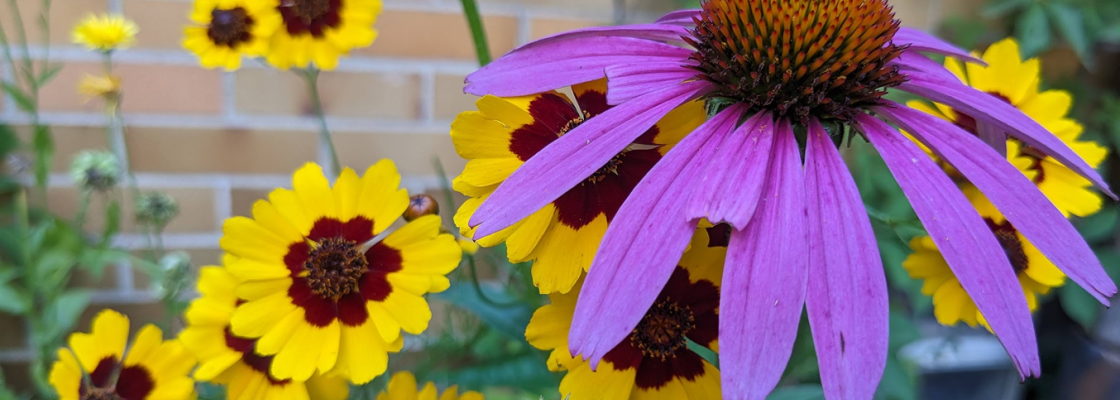Clay is composed of very fine, densely packed particles, including many essential nutrients and minerals. If you can squeeze a handful of your garden soil and it holds its shape after you have let go, it probably contains some clay. Clay’s density makes it difficult for water, air molecules, and plant roots to move through it, often causing poorly sited plants to struggle or fail. Never attempt to remove or “replace” clay, though – making drastic changes to ground soil can have devastating consequences. Instead, amend the existing soil to facilitate plant establishment and choose plants that are known to adapt well to clay.
To amend your soil, mix a little topsoil (no more than 10-20% of the total soil volume) into it when you plant. This will help loosen the soil so that plant root systems can get a foothold. You can also help your new plants adjust to living in a clay-rich environment by planting them with their crowns an inch or two above the surrounding ground surface, mounding the soil mixture up to them so that roots are not left exposed. This allows excess moisture to drain away from the root crowns, decreasing the likelihood of rot. Once a few plants have settled in and grown successfully in a clay-bound site, their ongoing root development will continue to improve the soil’s quality over time, and gradually the site will be able to accommodate a broader variety of plants.
We recommend starting with some of these perennials, as they tend to perform well where clay is present:
Aster
Black-Eyed Susan (Rudbeckia)
Blazing Star (Liatris)
Bluestar (Amsonia)
Bugleweed (Ajuga)
Coneflower (Echinacea)
Cup Plant (Silphium perfoliatum)
Daylily (Hemerocallis)
Fountain Grass (Pennisetum)
Goldenrod (Solidago)
Honeysuckle Vine (Lonicera)
Hosta
Ironweed (Vernonia)
Joe Pye Weed (Eupatorium)
Lilyturf (Liriope)
Lungwort (Pulmonaria)
Maiden Grass (Miscanthus)
Siberian Iris (Iris sibiricus)
Spiderwort (Tradescantia)
